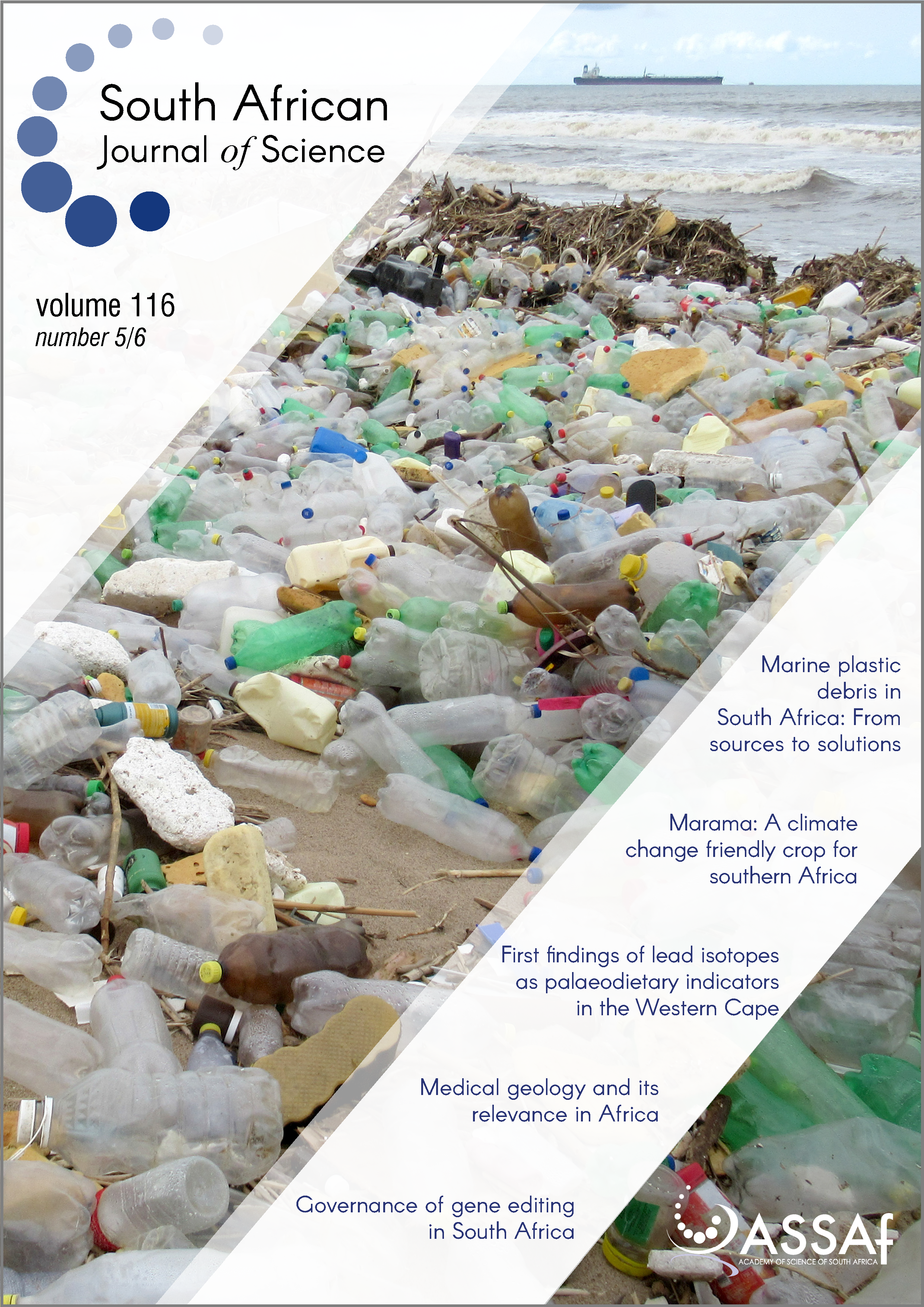Large mammal exploitation during the c. 14–11 ka Oakhurst techno-complex at Klipdrift Cave, South Africa
DOI:
https://doi.org/10.17159/sajs.2020/6754Keywords:
zooarchaeology, Later Stone Age, southern Cape, South Africa, palaeoenvironmentAbstract
Understanding how hunter-gatherers adapted to the marked environmental changes of the last glacialinterglacial transition (~18 to 11.7 ka cal. BP) remains a key question for archaeologists. South Africa, with its rich and well-preserved archaeological sequences, has a major role to play in this study. Reconstructing the subsistence strategies of people during the Later Stone Age (LSA) is crucial for investigating human– environment interactions at this period in South Africa, yet data are scarce. Recent excavations at a new LSA site, Klipdrift Cave, in the southern Cape, revealed c. 14–11 ka levels with excellent faunal preservation associated with an Oakhurst lithic industry. Taphonomic and zooarchaeological analyses of these levels show an almost exclusive accumulation of large mammal remains by LSA groups, with evidence of meat removal, marrow extraction, fire use and the preferential import of nutritious elements back to the site. Large mammals from the site indicate a relatively stable environment dominated by open grasslands that is in accordance with isotopic analyses, with only subtle diachronic variability. Comparison of faunal dynamics with changes in lithic industries, shellfish density and composition reflects complex, asynchronous changes in the macromammal, micromammal, shellfish and lithic records throughout the Oakhurst levels. Rather than evidence of a strong impact of global climate change, Klipdrift Cave shows subtle shifts in subsistence patterns and technology that are better explained by internal societal dynamics and the history of the Oakhurst techno-complex, or local changes in site occupation and direct environment.
Significance
- LSA archaeological sequences can document the impact of the marked environmental changes of the Pleistocene–Holocene transition on hunter-gatherer societies. Studies of past subsistence strategies are central to our understanding of human–environment interactions in these contexts.
- Zooarchaeological, taphonomical and palaeoecological analyses of the large mammal remains from the excavated LSA sequence at Klipdrift Cave provide new data on these interactions. The data highlight asynchronous changes in subsistence patterns, lithic technology and local environment, supporting a complex interplay between climate change, local environment, societal changes and human prehistory.
- Klipdrift Cave data set also shows that excavation and analytical choices can strongly bias faunal analysis and environmental reconstructions based thereon.
Published
Issue
Section
License

All articles are published under a Creative Commons Attribution 4.0 International Licence
Copyright is retained by the authors. Readers are welcome to reproduce, share and adapt the content without permission provided the source is attributed.
Disclaimer: The publisher and editors accept no responsibility for statements made by the authors
How to Cite
- Abstract 955
- PDF 601
- EPUB 252
- XML 384
Funding data
-
European Research Council
Grant numbers 249587 -
Universitetet i Bergen
-
Norges Forskningsråd
Grant numbers SapienCE project number 262618












.png)